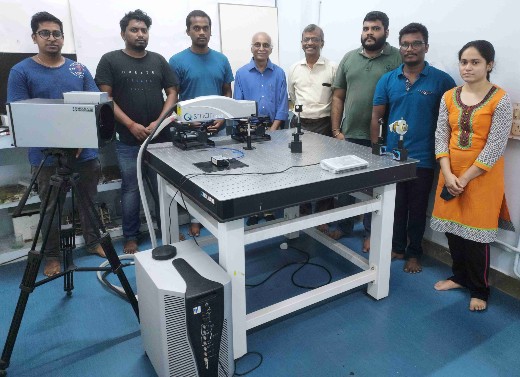IIT Madras Researchers Develop Efficient Technique for the Identification of Pollution Deposit Level in the Power Transmission Network
The IIT Madras Research Team is planning to approach NTPC, Power Grid and other utilities to demonstrate this technology and its use in the real power system network
CHENNAI : Indian Institute of Technology Madras Researchers have developed an efficient technique for identification of pollution deposit level in Power transmission network.
The pollution-related electrical flashover occurs in the working conditions and can lead to blackouts and collapse of the system. Cleaning the polluted insulator under the working condition, while technically quite challenging, seems to be the fool-proof way of resolving the problem.
The IIT Madras Research Team is planning to approach NTPC, Power Grid and other utilities to demonstrate this technology and its use in the real power system network.
The Key Applications and Benefits of this Research include (in non-technical terms)
Ø Online monitoring without interrupting power supply
Ø Rapid and remote measurement
Ø Non-invasive/Non-destructive measurement
Ø Most economical process
The reliability of an electric power system largely depends on the performance of the electrical insulation. The outdoor insulation on the transmission lines running over a few lakh kilometres and the substation equipment, in addition to the electrical, thermal and mechanical stresses, are subjected to environmental pollution.
However, due to the high operating voltages and huge spatial span of the electrical transmission system, it would be essential to ascertain the level of pollution deposition and the type of pollutant before such a mammoth exercise can be planned.
For substations and lines running close to the chemical plants, the deposit can involve NaCl, Al2O3, C, SiO2, CaSO4, and KNO3, among others, while that close to the mining areas can acquire Nickel, Copper, and Manganese, besides a few other materials.
It would be much simpler and economical to measure the contents and thickness of the deposition remotely (non-invasively). An elegant solution based on Laser Induced Breakdown Spectroscopy (LIBS) has been developed by the research groups of Prof. R. Sarathi, Department of Electrical Engineering, IIT Madras, and Prof. N.J. Vasa, Department of Engineering Design, IIT Madras.
The initial results of the study have been published in reputed peer-reviewed journal IOP- Measurement Science and Technology. (https://doi.org/10.1088/1361-6501/ac0d22)
At present, by shining a laser beam at a distance of 40 metres, the researchers can identify the constituents of pollution deposition, while efforts are underway to extend this distance to 100 m. This would enable assessing the pollution layer on transmission line insulators and the windmills either from the ground or from a drone.
This work was financially supported under the National Perspective Plan of the Ministry of Power, Government of India through Central Power Research Institute (CPRI), Bengaluru.
Elaborating on the important outcomes of this research, Prof. R. Sarathi, Department of Electrical Engineering, IIT Madras, said, “The presence of salt and other pollutant deposits on the insulating materials were successfully identified using the LIBS analysis. The level of pollution on the insulating material was identified by using the proposed linear relationship between normalized intensity ratio of the LIBS spectra and the equivalent salt deposition density (ESDD) level.”
Further, Prof. R. Sarathi said, “The artificial neural network (ANN) assisted LIBS technique is successful with high classification accuracy (>99%), in the classification of the polluted insulating materials based on the ESDD level and type of pollution.”
To determine the constituents and amount of pollution, the deposition on the insulators is collected and then the evaluation of the equivalent salt deposit density (ESDD) and non-soluble material deposit density (NSDD) is carried out. There are also attempts to measure the leakage current through the insulator to monitor the severity of the pollution. These are quite cumbersome and expensive.
Highlighting the importance of LIBS analysis, Prof. N. J. Vasa, Department of Engineering Design, IIT Madras, added, “Laser induced breakdown spectroscopy is one of the qualitative and quantitative techniques for the classification of the different kind of materials. It can also efficiently rank the performance of the different insulating materials by elemental analysis.”
The technology developed adopting LIBS allows one to identify the composition and severity level of pollution deposit just by shining the laser on to the insulator surface. In other words, no interruption of the power transmission is required nor the cumbersome process of climbing on to the tower. The technique is simple and reliable, which can provide accurate results within no time. The entire length of the transmission line could be monitored effectively for its condition on pollution deposit level, in a short time.
Further, Prof. R. Sarathi said, “LIBS coupled with Machine Learning techniques are becoming promising tools for the identification and classification of the type and level of the pollutant deposits on the insulators in the power transmission network.”
Using this effective technique, the pollution level on the transmission line insulators and the windmills can be identified at any remote locations. This technique could enable the power system community to have an online monitoring on the condition of the transmission line insulators.

